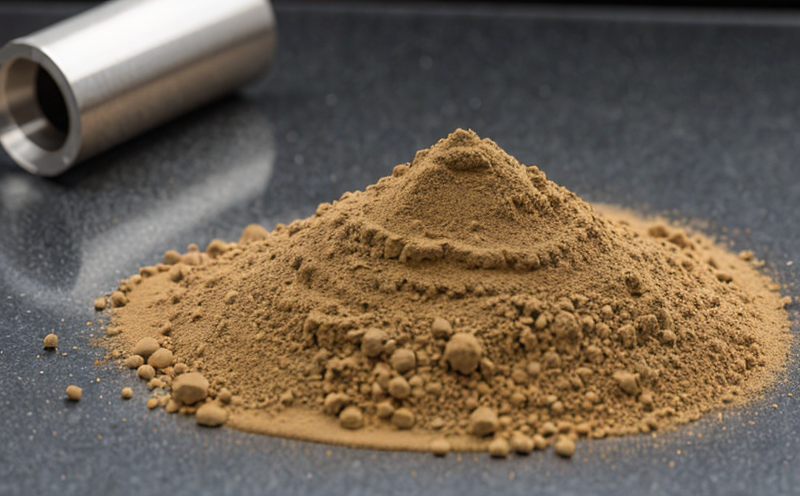ISO 4589 Oxygen Index Testing of Raw Materials
The ISO 4589 oxygen index test is a critical measurement used to determine the resistance of materials to ignition and flaming. This method quantifies the minimum concentration of oxygen required for a combustible material to support combustion, thus providing valuable insights into its flammability characteristics.
In additive manufacturing (AM) and 3D printing processes, raw materials are subjected to complex thermal environments that can significantly influence their performance and safety. Ensuring these materials meet stringent flammability requirements is essential for the design of safe and reliable AM parts. By conducting ISO 4589 testing on raw materials, manufacturers can optimize material selection and processing parameters, ensuring final products meet both regulatory standards and internal quality control criteria.
The test involves measuring the oxygen index (OI) of a sample in an oxygen/nitrogen mixture environment. The OI is defined as the percentage by volume of oxygen in the gas mixture required to maintain combustion for at least 60 seconds after ignition. This value provides important information about the material's resistance to smoldering and flaming, which are key factors affecting fire safety.
The ISO 4589 test method is widely recognized and accepted globally due to its reliability and repeatability. It complies with international standards such as ISO 4589-1:2013, which specifies the procedure for determining the oxygen index of materials used in fire protection applications.
Understanding the OI value of raw materials is particularly important in AM because it directly impacts the design and performance of parts. For instance, materials with a low OI are more prone to ignition, while those with higher OI values exhibit better resistance to fire. This knowledge allows engineers and designers to select appropriate materials for specific applications, ensuring that end products meet rigorous safety requirements.
The ISO 4589 test is not only useful in quality control but also plays a crucial role in research and development (R&D). By conducting these tests early in the design process, manufacturers can identify potential issues related to material flammability and address them before production begins. This proactive approach helps prevent costly rework and ensures that products are reliable and safe from inception.
In summary, ISO 4589 oxygen index testing is a cornerstone of quality assurance and safety in additive manufacturing and 3D printing processes. It enables manufacturers to make informed decisions regarding material selection, process optimization, and product design, ultimately contributing to the development of safer and more reliable AM parts.
- Ensures compliance with international fire safety standards
- Improves product reliability by identifying flammability issues early in the production cycle
- Optimizes material selection for specific applications
- Promotes innovation through better understanding of raw materials' performance characteristics
Why It Matters
The importance of ISO 4589 oxygen index testing in additive manufacturing and 3D printing cannot be overstated. As the demand for complex, high-performance parts continues to grow, ensuring that raw materials meet stringent flammability requirements is essential for maintaining product safety.
Flammable materials pose significant risks during the AM process due to the high temperatures involved. Even small amounts of flammable material can lead to accidents if not properly managed. By conducting ISO 4589 tests on raw materials, manufacturers can identify and mitigate these risks early in the production cycle.
The test results provide critical data that informs material selection decisions. For example, a material with a low OI value may be suitable for applications where minimal fire risk is acceptable, but it would not be appropriate for high-risk environments such as aerospace or automotive. Conversely, materials with higher OI values are better suited to these demanding applications.
Furthermore, ISO 4589 testing helps ensure that parts produced using AM techniques meet regulatory requirements and internal quality standards. This is particularly important in industries where safety and reliability are paramount, such as medical devices or aviation components.
The test also plays a vital role in R&D by facilitating the development of new materials with improved performance characteristics. By understanding how different raw materials behave under various oxygen concentrations, researchers can innovate more effective solutions for challenging applications.
In conclusion, ISO 4589 oxygen index testing is indispensable for ensuring the safety and reliability of additive manufactured parts. It provides essential information that guides material selection, process optimization, and product design, ultimately contributing to safer and more robust products across various industries.
Benefits
The benefits of ISO 4589 oxygen index testing extend beyond mere compliance with regulatory standards; they encompass enhanced safety, improved performance, and increased efficiency throughout the entire production process. Here are some key advantages:
- Enhanced Safety: By identifying flammable materials early in the design phase, manufacturers can take proactive measures to minimize risks associated with AM processes.
- Better Material Selection: The test results provide valuable insights into material performance under different oxygen concentrations, enabling more informed decisions regarding raw material selection.
- Innovation and Development: Understanding the flammability characteristics of raw materials allows for the development of new materials with improved properties tailored to specific applications.
- Compliance Assurance: Compliance with international standards ensures that products meet regulatory requirements, reducing the risk of non-compliance penalties or product recalls.
- Efficiency Gains: Early identification and resolution of flammability issues can significantly reduce production delays and costs associated with rework or scrapped parts.
- Customer Trust: Demonstrating a commitment to safety and quality fosters trust between manufacturers and their customers, enhancing brand reputation and market competitiveness.
In summary, ISO 4589 oxygen index testing is not just a regulatory requirement but also a strategic tool that supports the development of safer, more reliable, and innovative products in additive manufacturing.





